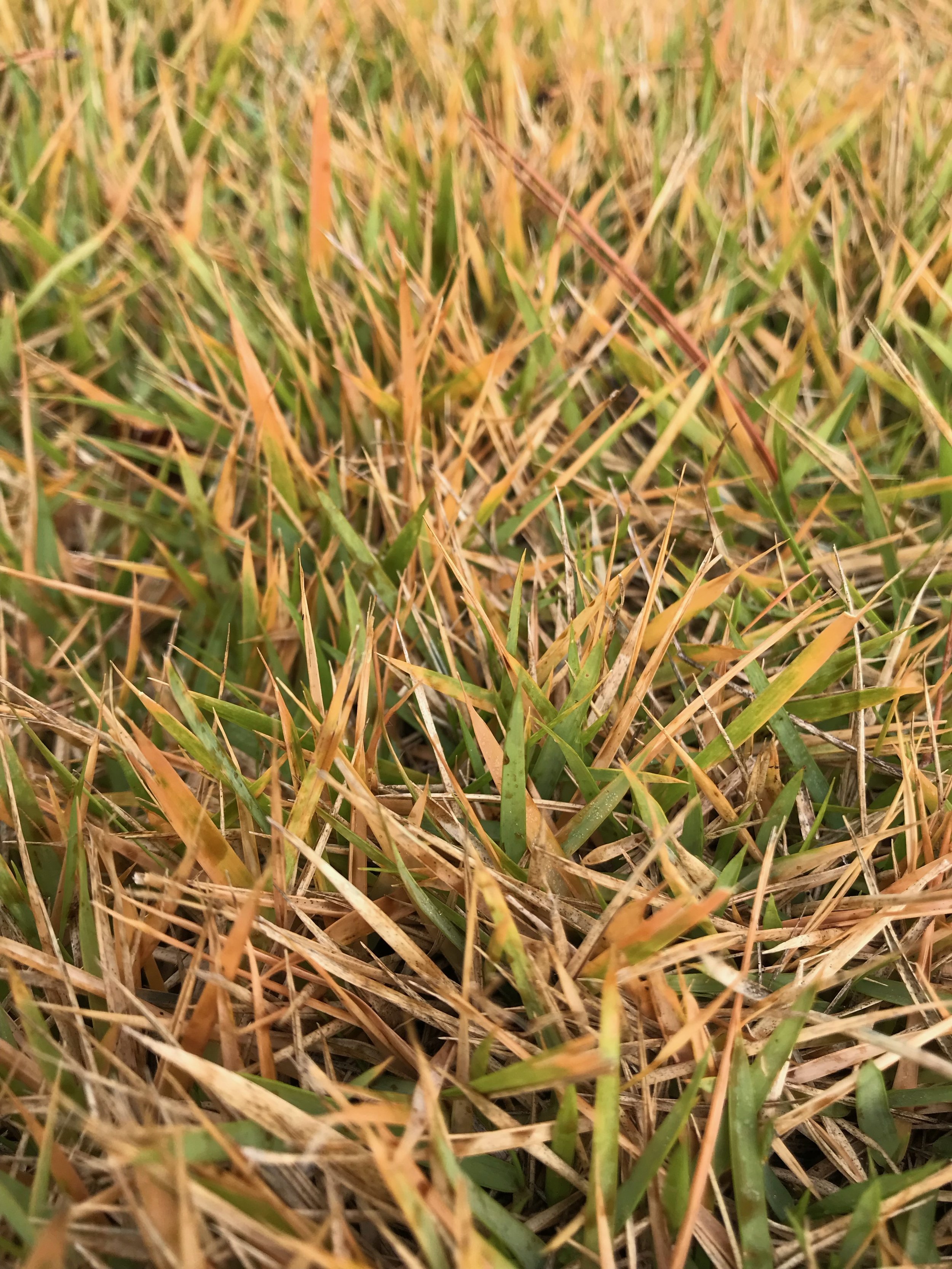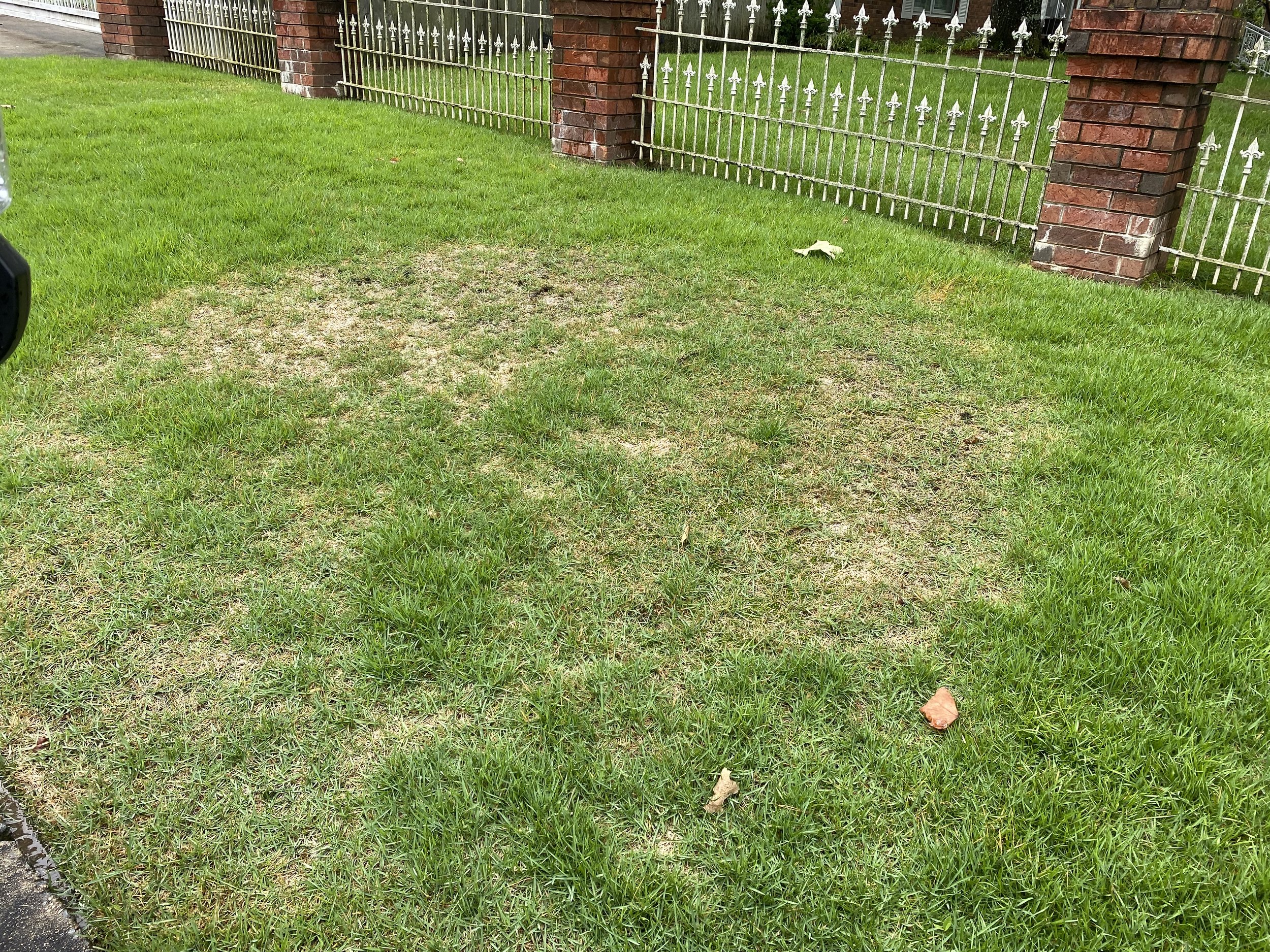Lawn Disease (fungus)
How We Deal With Disease
Turfgrass diseases can cause severe damage if left untreated.
Signs & Symptoms
🔍 Common Symptoms:
Rings, Arches, or Crescents of Damaged Truf.
Circular-shaped Areas of Suppressed Growth
Warm Color Grass Blades
Small Brown Leaf Spots
🌡 Ideal Conditions for Development:
Daytime temperatures between 65-85°F
High Humidity and Rainy Periods.
🌿 Contributing Factors:
Excessive Thatch
Compounding Stress from:
improper mowing habits
drought stress
lack of sunlight
Common Fungal Types
Fairy Ring alters soil conditions, creating expanding rings that indirectly weaken or kill grass.
Large Patch thrives in cool, wet conditions, attacking turf in fall and spring, with symptoms most visible during green-up.
Gray Leaf Spot primarily affects St. Augustine but also threatens other warm-season grasses.
Lawn Rust coats grass blades with distinctive orange spores, spreading quickly through foot traffic and mowing.
Spring Dead Spot targets bermudagrass, causing circular patches of dead turf that fail to recover in spring. Understanding these fungal threats is key to maintaining a healthy, resilient lawn. 🍃🍂








